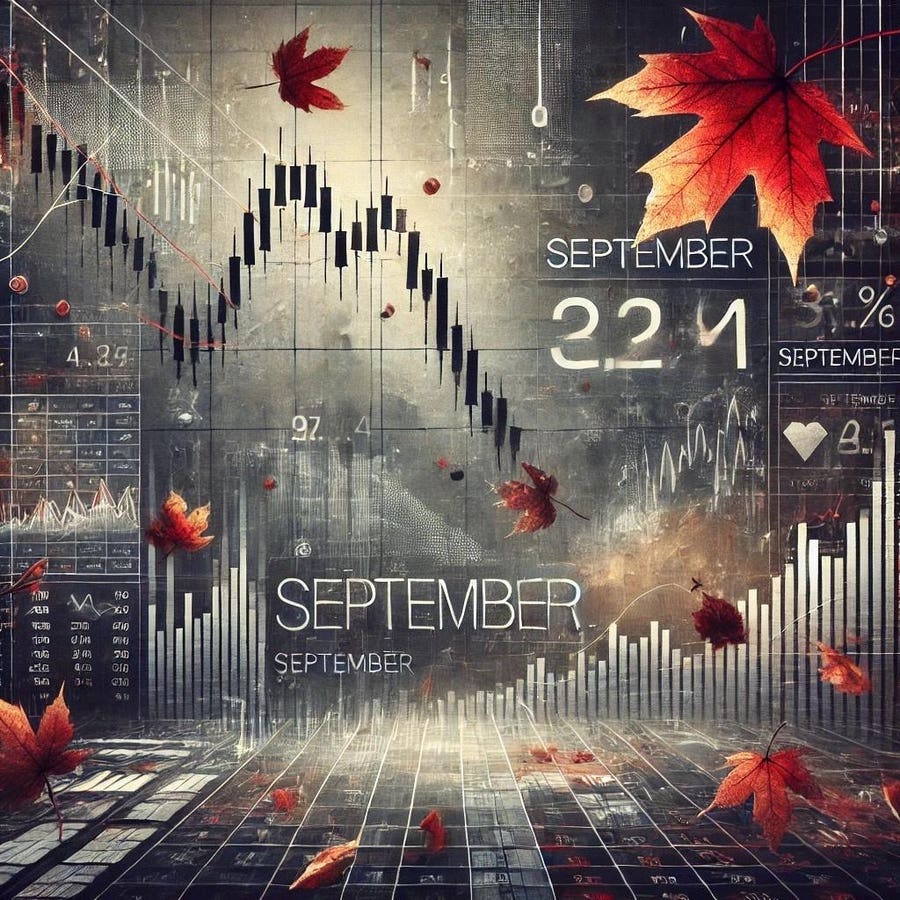September is my favorite month. There’s always a sense of energy, of dynamism, new beginnings rooted in memories of going back to school and university. For the markets, though, it’s September, not April, that is the cruelest month. The “September Effect” has always fascinated me, both for its persistence and the continued uncertainty about what might be driving it. As I write this on the afternoon of Wednesday 4th, stocks feel eerily redolent of the early days of August, when a confluence of factors combined to unsettle the previously sanguine markets. It’s clear, though, that this isn’t a question of rotation (which I wrote about a few weeks ago), nor merely the reflection of two consecutive early-month PMI disappointments. NVIDIA
SPDR Dow Jones Industrial Average ETF Trust
has seen the largest single-day drop in market cap ever (losing $279bn of value in a single session – insert the GDP of your favorite middle-income country). What’s crucial is that the rest of the market has followed it lower.
The current declines recall previous Septembers, when the early days of meteorological fall/autumn seem to bring about a period of pessimistic introspection in the markets. You have to go back to 2021 to find a (narrowly) positive return for the S&P 500 in September and, as this chart from my colleague Henry Neville, CFA
VictoryShares US 500 Volatility Wtd ETF
shows, deeper history supports this recent experience. September is the only month whose average return since 1926 is negative.
Another way of looking at this data is to segregate months by hit rate. If you buy stocks at the start of December, then you have an 80% chance of greeting the New Year with more money than you had at the start of the month. In September, that hit rate is less than 50%.
Of course, months are largely abstract constructs, but not entirely so. There’s a great piece of research by Zhang and Jacobsen that looks at seasonality across 114 markets and several centuries (their data set begins in 1693!) and finds that seasonality – ‘Sell in May and Go Away’ and ‘the Halloween Effect’ – is persistent across time, geographies and cultures. It feels like there’s a seasonal rhythm that exists across the globe that seems to drive animal spirits.
There’s one argument, cited in this paper by academics from INSEAD, Rotterdam and the National University of Singapore, that suggests that the September Effect is a direct result of the long northern hemisphere school holidays, when information is incorporated less swiftly into the markets by traders on the beach (or dealing with the challenges of childcare). This paper, by Brown et al. looks at the phenomenon of quarter-end window-dressing by large institutions. Window dressing involves buying stocks with good recent performance or dumping stocks with poor recent performance near the end of a quarter to improve the appearance of a portfolio that will be presented to clients or shareholders. Agarwal et al. find that poorly performing and less skilled mutual funds are more likely to engage in window dressing.
It may be that it’s just that September brings with it a confluence of news and engagements that we are able to push from the front of our minds in the holiday period (even if we are not, in fact, on holiday). Overreaction to negative news feels like it is more likely at a time when the investor is newly calibrating his or her attention, and the familiar beats of earnings releases and central bank statements seem suddenly to attain new salience.
I’ve had questions from clients about seasonality before: how can such an obvious anomaly exist in a market that is supposedly efficient and targeted by systematic strategies looking to exploit arbitrage opportunities? The answer is, I think, that there are two forms of market anomaly. There are mispricings, where two very similar securities are priced at different levels and arbitrageurs buy one and sell the other until the anomaly is eradicated. Then there are anomalies like this one, where knowing that it exists may actually serve to perpetuate and exacerbate the phenomenon. Momentum as a broader factor is like this, where trends are accentuated by the habitual movement of investor money into them, even when the fundamental picture doesn’t justify it (and it would take several more columns to spell out the various arguments around fundamentals right now).
I’d also point to a classic paper by Shleifer and Vishny in the Journal of Finance on the limits of arbitrage. The September Effect seems to speak specifically to two areas that they identify as limiting the opportunity for arbitrage. Firstly, you only get one shot a year at this anomaly, meaning that time is a factor. Secondly, it feels like the anomaly – a 50/50 hit rate, more or less – simply isn’t large enough to be a magnet for arbitrageurs. When you factor in trading costs, liquidity constraints and the idiosyncrasies of geopolitics and central bank decision making, it makes for a phenomenon that is both real and fascinating, but rather difficult to make money out of.
It will be fascinating to see how September plays out. Will it follow August, recouping early losses? Or will it follow the path of previous Septembers and continue a century-long streak of sub-par performance?
Read the full article here


